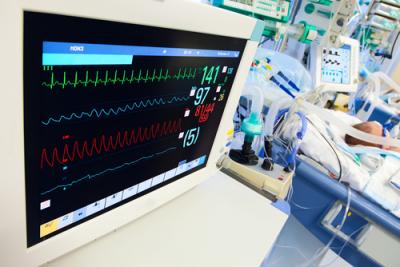The Intensive Care Units of the MUHC
 The intensive care units (ICU) of the McGill University Health Centre (MUHC) treat the most vulnerable patients, whether they are in recovery from surgery, have severe medical complications, or have recently experienced sudden trauma. From Sunday October 27th to Saturday November 2nd, Canada celebrated ICU week, an opportunity to recognize the hard work of the physicians, surgeons, nurses, technicians and other support staff, and to thank them for their dedication.
The intensive care units (ICU) of the McGill University Health Centre (MUHC) treat the most vulnerable patients, whether they are in recovery from surgery, have severe medical complications, or have recently experienced sudden trauma. From Sunday October 27th to Saturday November 2nd, Canada celebrated ICU week, an opportunity to recognize the hard work of the physicians, surgeons, nurses, technicians and other support staff, and to thank them for their dedication.
Defining intensive care
The MUHC provides a tertiary care ICU, which is a combination of medical, surgical, neurological and trauma units, with an expertise in treating patients who are critically ill.
Critical care is a quickly evolving sub-specialty and today’s critical care physicians come from a variety of different specialities, such as surgery, anaesthesiology, pulmonary medicine and others.
“Twenty years ago, the intensive care landscape was quite segmented – surgeons, neurologists and medical experts each looked after their own patients,” explains Dr. Ash Gursahaney, associate chief of the ICU department of the MUHC. “What they came to realize is that as patient conditions worsen and require more advanced care, patients inevitably come to a common pathway. It made sense to treat critical care as its own specialty.”
The difficulties of critical care delivery
“The issues surrounding intensive care are very delicate,” says Dr. Gursahaney. “On the one hand, it’s becoming clear that as innovations in medicine, surgery and intensive care treatments advance, more patients are surviving difficult health complications and living longer. On the other hand, because recovery periods are very long in spite of their success rates, those surviving patients are living longer while remaining sick.”
Over the past several years, the MUHC has re-evaluated how it delivers intensive care, in very promising ways, according to Dr. Gursahaney. For example, while the MUHC has reduced the net number of beds at its hospital sites, it has increased the number of beds in its ICUs. “In the past, each department would operate its own ICU. But as of 2011, Intensive Care is its own department at the MUHC, which I see as a very positive development. It changed our approach to intensive care as an interdisciplinary sub-specialty. This has led to innovations in clinical care, research and better patient outcomes.”
The delicate issues surrounding patient wellbeing
One of the most emotionally difficult aspects of critical care is the inevitability of the end of life, a reality that critical care specialists must confront more frequently than other healthcare workers. However, in Canada’s current public discourse on healthcare issues, end of life care is one of the frontline issues.
“We provide supportive care with the hope that patients will improve, but that does not always happen,” says Dr. Gursahaney. “If it becomes clear that a patient will not improve, critical care physicians do not usually want to prolong life at the cost of interminable suffering.” According to Dr. Gursahaney, it is important to properly define the difference between the end of critical care and the current debate over euthanasia.
“When the time is right, critical care physicians will remove life-support machines from patients. While this is always a very emotional time, this act is often confused for euthanasia, but it is very different. It is a framing issue: what we must often do is stop therapies that have no chance of changing the outcome of a patient and have associated pain and discomfort, whereas euthanasia is the termination of life at the patient’s request.
“What concerns me is that the debate over euthanasia could not only potentially have a huge impact on how we deliver care, but more importantly on patient’s understanding of critical care.”